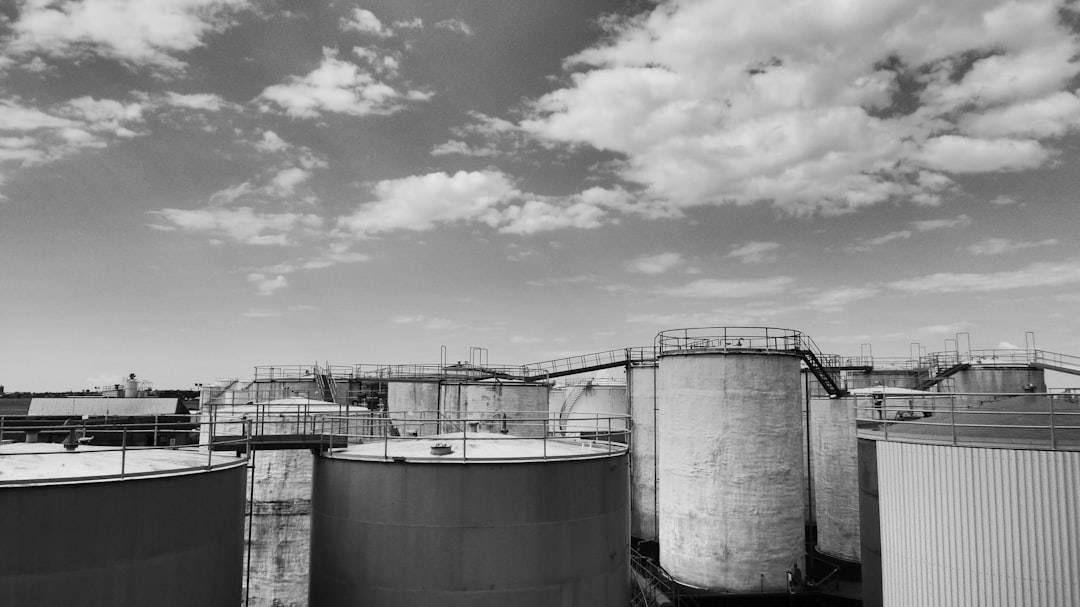Convolutional Neural Networks (CNNs) are deep learning algorithms specifically designed for processing and analyzing visual data, including images and videos. Inspired by the human visual cortex, CNNs excel at recognizing patterns and features within visual information. The primary components of a CNN include convolutional layers, pooling layers, and fully connected layers.
Convolutional layers apply filters to input data, extracting features such as edges, textures, and shapes. Pooling layers downsample feature maps to reduce computational complexity. Fully connected layers make predictions based on the extracted features.
CNNs are trained through backpropagation, a process where the network adjusts its parameters to minimize the difference between predictions and actual labels of training data. CNNs have transformed computer vision and are widely used in applications like image recognition, object detection, and medical imaging. Their ability to automatically learn hierarchical representations of visual data makes them powerful tools for tasks involving image understanding and interpretation.
Key Takeaways
- CNNs are a type of deep learning algorithm commonly used for image recognition and classification tasks.
- Training CNNs involves feeding them with labeled images and adjusting the network’s parameters to minimize the difference between predicted and actual labels.
- CNNs can be used for object detection and localization by adding additional layers to the network to identify and locate objects within an image.
- Transfer learning and data augmentation are techniques used to improve CNN performance by leveraging pre-trained models and increasing the diversity of training data.
- Optimizing CNNs for real-time applications and edge devices involves reducing the computational complexity of the network to enable efficient processing on resource-constrained devices.
Training Convolutional Neural Networks for Image Recognition
Data Preparation
The process begins with the collection and preprocessing of a large dataset of labeled images. This dataset is then divided into three subsets: training, validation, and testing sets, which are used to evaluate the performance of the trained model.
Model Architecture and Training
The next step is to design the architecture of the CNN, including the number of convolutional layers, pooling layers, and fully connected layers. Once the architecture is defined, the CNN is trained using an optimization algorithm such as stochastic gradient descent (SGD) to minimize the loss function and update the network’s parameters. During training, the model’s performance is evaluated on the validation set to monitor its accuracy and make adjustments to prevent overfitting.
Computational Requirements and Advancements
Training CNNs for image recognition requires a significant amount of computational resources, especially when working with high-resolution images and complex architectures. However, advancements in hardware such as Graphics Processing Units (GPUs) and Tensor Processing Units (TPUs) have significantly accelerated the training process, making it feasible to train large-scale CNNs on massive datasets.
Leveraging CNNs for Object Detection and Localization

In addition to image recognition, CNNs can also be used for object detection and localization tasks. Object detection involves identifying and localizing multiple objects within an image, while localization focuses on precisely determining the spatial extent of a single object. CNNs achieve this by using techniques such as region-based convolutional neural networks (R-CNN), You Only Look Once (YOLO), and Single Shot Multibox Detector (SSD).
R-CNN operates by first generating region proposals using selective search or edge boxes, then applying a CNN to each proposal to classify and refine the bounding boxes. YOLO takes a different approach by dividing the input image into a grid and predicting bounding boxes and class probabilities directly from the grid cells. SSD also uses a grid-based approach but predicts bounding boxes at multiple scales within each grid cell.
Object detection and localization with CNNs have numerous practical applications, including autonomous vehicles, surveillance systems, and augmented reality. By accurately identifying and localizing objects within visual data, CNNs enable machines to understand their environment and make informed decisions based on the detected objects.
Enhancing CNNs with Transfer Learning and Data Augmentation
| Technique | Accuracy Improvement | Training Time |
|---|---|---|
| Transfer Learning | Up to 10% | Reduced |
| Data Augmentation | Up to 5% | Increased |
Transfer learning is a technique that leverages pre-trained CNN models on large-scale datasets such as ImageNet to accelerate the training process and improve generalization performance on new tasks or domains. By reusing the learned features from a pre-trained model, transfer learning allows for effective training on smaller datasets and reduces the need for extensive computational resources. Data augmentation is another crucial technique for enhancing CNNs, especially when working with limited training data.
Data augmentation involves applying transformations such as rotation, scaling, flipping, and cropping to the input images, effectively increasing the diversity of the training dataset. This helps prevent overfitting and improves the robustness of the trained model. By combining transfer learning with data augmentation, CNNs can achieve state-of-the-art performance on various visual recognition tasks while minimizing the need for large-scale labeled datasets and computational resources.
Optimizing CNNs for Real-time Applications and Edge Devices
Optimizing CNNs for real-time applications and edge devices is essential for deploying deep learning models in resource-constrained environments such as mobile devices, IoT devices, and embedded systems. This involves techniques such as model quantization, pruning, and compression to reduce the size and computational complexity of CNN models without significantly sacrificing their performance. Model quantization aims to represent the network’s parameters using fewer bits, reducing memory footprint and improving inference speed.
Pruning involves removing redundant connections or filters from the network to reduce its size while maintaining accuracy. Compression techniques such as knowledge distillation further reduce the size of the model by transferring knowledge from a larger teacher network to a smaller student network. Optimizing CNNs for real-time applications and edge devices enables efficient deployment of deep learning models in a wide range of scenarios, including mobile image recognition, smart cameras, and edge AI devices.
Exploring the Potential of CNNs in Medical Imaging and Autonomous Vehicles

CNNs have shown great promise in medical imaging applications such as disease diagnosis, tumor detection, and medical image analysis. By analyzing medical images such as X-rays, MRI scans, and histopathology slides, CNNs can assist healthcare professionals in making accurate diagnoses and treatment decisions. Furthermore, CNNs can be used for image segmentation to identify specific regions of interest within medical images, enabling precise localization of abnormalities.
In the field of autonomous vehicles, CNNs play a critical role in perception tasks such as object detection, lane detection, and traffic sign recognition. By processing data from cameras, LiDAR sensors, and radar systems, CNNs enable vehicles to understand their surroundings and make real-time decisions to ensure safe navigation. The potential of CNNs in medical imaging and autonomous vehicles highlights their versatility and impact across diverse domains, demonstrating their ability to address complex challenges and improve human lives.
Overcoming Challenges and Ethical Considerations in AI-powered CNNs
While CNNs offer tremendous potential for solving real-world problems, they also present several challenges and ethical considerations that need to be addressed. One major challenge is the interpretability of CNN models, as their complex architectures make it difficult to understand how they arrive at their predictions. This lack of transparency raises concerns about accountability and trust in AI-powered systems.
Another challenge is bias in training data, which can lead to unfair or discriminatory outcomes when deploying CNN models in real-world applications. Addressing bias requires careful curation of training datasets and ongoing monitoring of model performance to ensure fairness and equity. Ethical considerations also arise in areas such as privacy, security, and societal impact when deploying AI-powered CNNs.
Protecting sensitive information in medical imaging or ensuring safety in autonomous vehicles are critical ethical considerations that require thoughtful design and responsible deployment of CNN models. In conclusion, while CNNs offer remarkable capabilities in visual recognition tasks, it is essential to address challenges and ethical considerations to ensure their responsible use and positive impact on society. By advancing research in interpretability, fairness, privacy, and security, we can harness the full potential of CNNs while mitigating potential risks and ensuring ethical AI practices.
If you’re interested in the intersection of technology and virtual reality, you may want to check out this article on the historical evolution of the metaverse here. It explores the development of virtual worlds and their impact on society, which is a topic that intersects with the advancements in Convolutional Neural Networks.
FAQs
What are Convolutional Neural Networks (CNNs)?
Convolutional Neural Networks (CNNs) are a type of deep learning algorithm that is commonly used for analyzing visual imagery. They are designed to automatically and adaptively learn spatial hierarchies of features from input data.
How do Convolutional Neural Networks work?
CNNs work by using a mathematical operation called convolution to extract features from input data. These features are then passed through a series of layers, including pooling layers and fully connected layers, to ultimately produce a classification or prediction.
What are the applications of Convolutional Neural Networks?
CNNs are widely used in image and video recognition, object detection, facial recognition, medical image analysis, and autonomous vehicles. They are also used in natural language processing tasks such as text classification and sentiment analysis.
What are the advantages of using Convolutional Neural Networks?
CNNs are able to automatically learn features from raw data, reducing the need for manual feature engineering. They are also highly effective at capturing spatial hierarchies of features, making them well-suited for tasks involving visual data.
What are some popular Convolutional Neural Network architectures?
Some popular CNN architectures include LeNet, AlexNet, VGG, GoogLeNet, and ResNet. These architectures vary in terms of their depth, number of layers, and overall performance on different tasks.
What are some challenges of using Convolutional Neural Networks?
Challenges of using CNNs include the need for large amounts of labeled training data, computational complexity, and the potential for overfitting. Additionally, CNNs may struggle with tasks involving occluded or rotated objects.











Leave a Reply